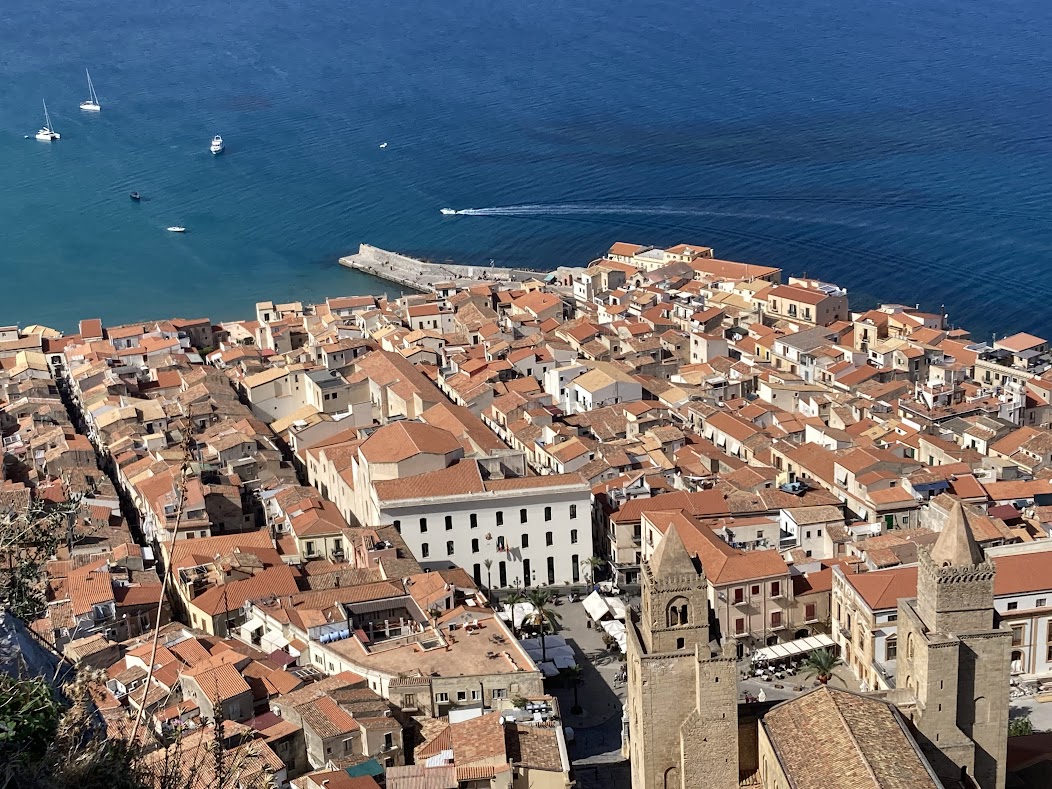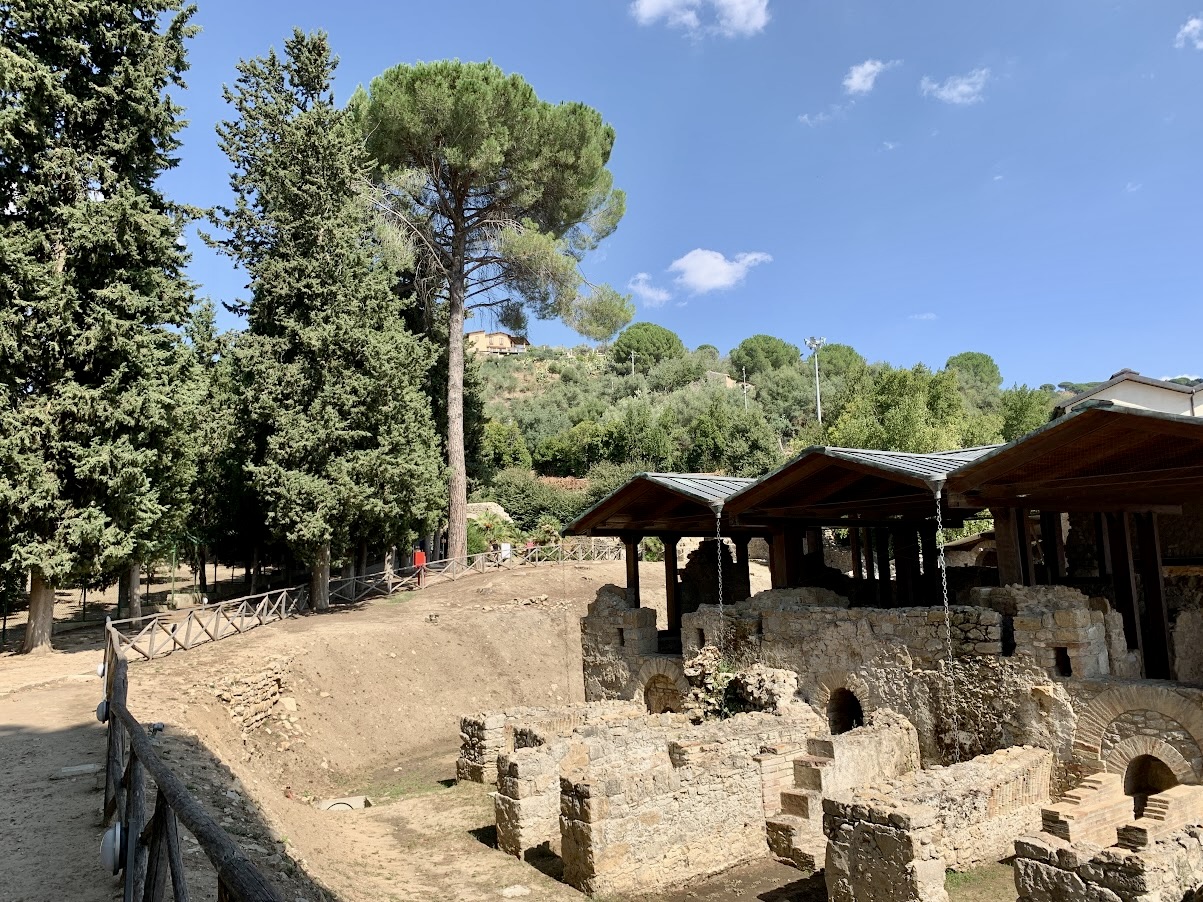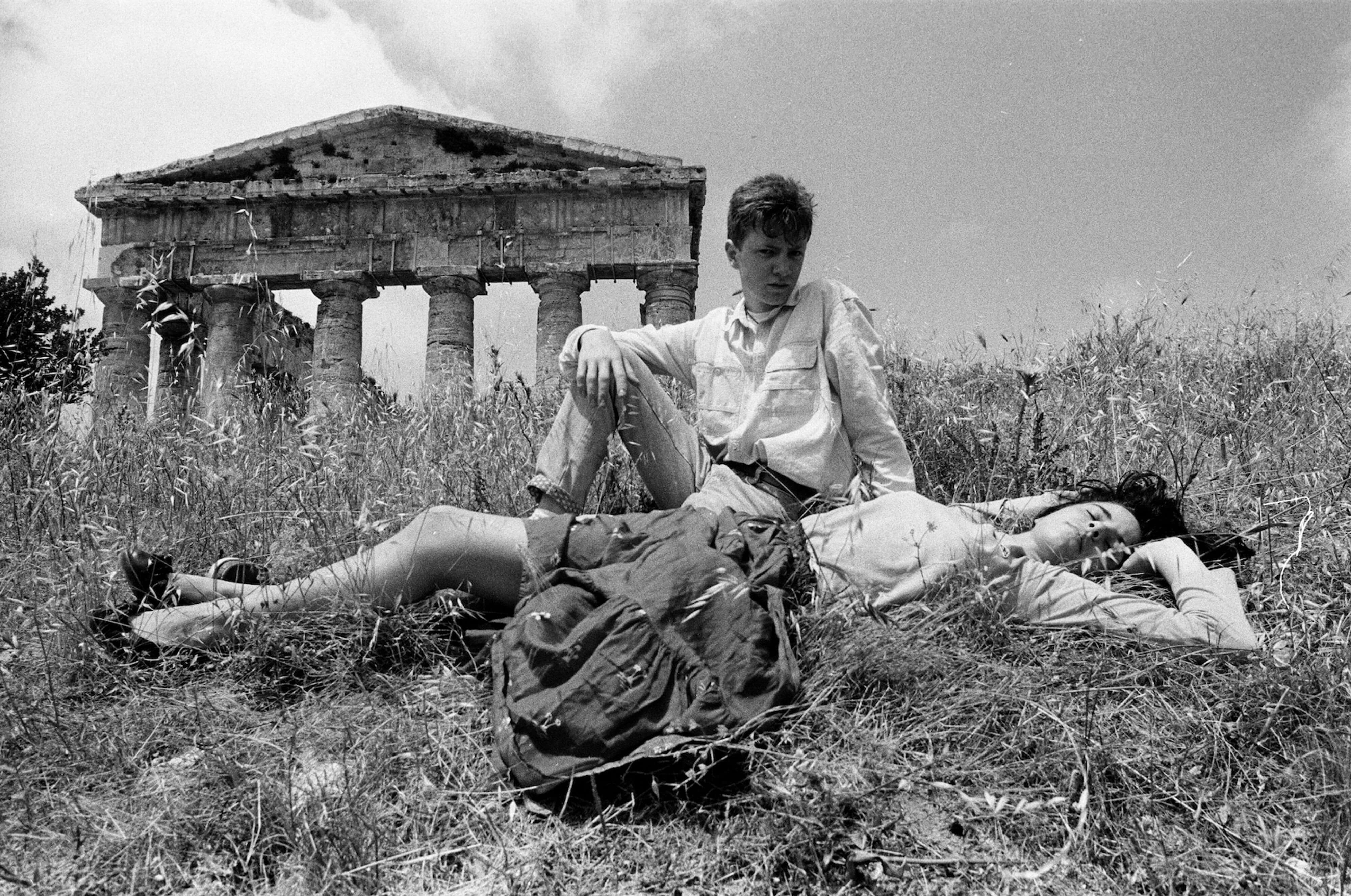- Home
- Things to Do in Sicily
- Arab-Norman Palermo
- Palatine Chapel
The Magnificent Beauty of Palatine Chapel in Palermo: A Glimpse into Italy's Architectural Masterpiece
Palermo, the capital of Sicily, in Italy, is famous for its rich and diverse history. One of the most magnificent parts of this history is its brilliant Arab-Norman architecture.
These churches and palaces, unique to the multicultural atmosphere of the island during the Middle Ages, stand as a testament to a time of great cultural upheaval in Sicily, a period unlike any other in Europe.
The most splendid of these architectural gems is the Palatine Chapel. It is a breathtaking fusion of Norman, Byzantine, and Arabic influences, a testament to the region's unique and diverse cultural heritage.
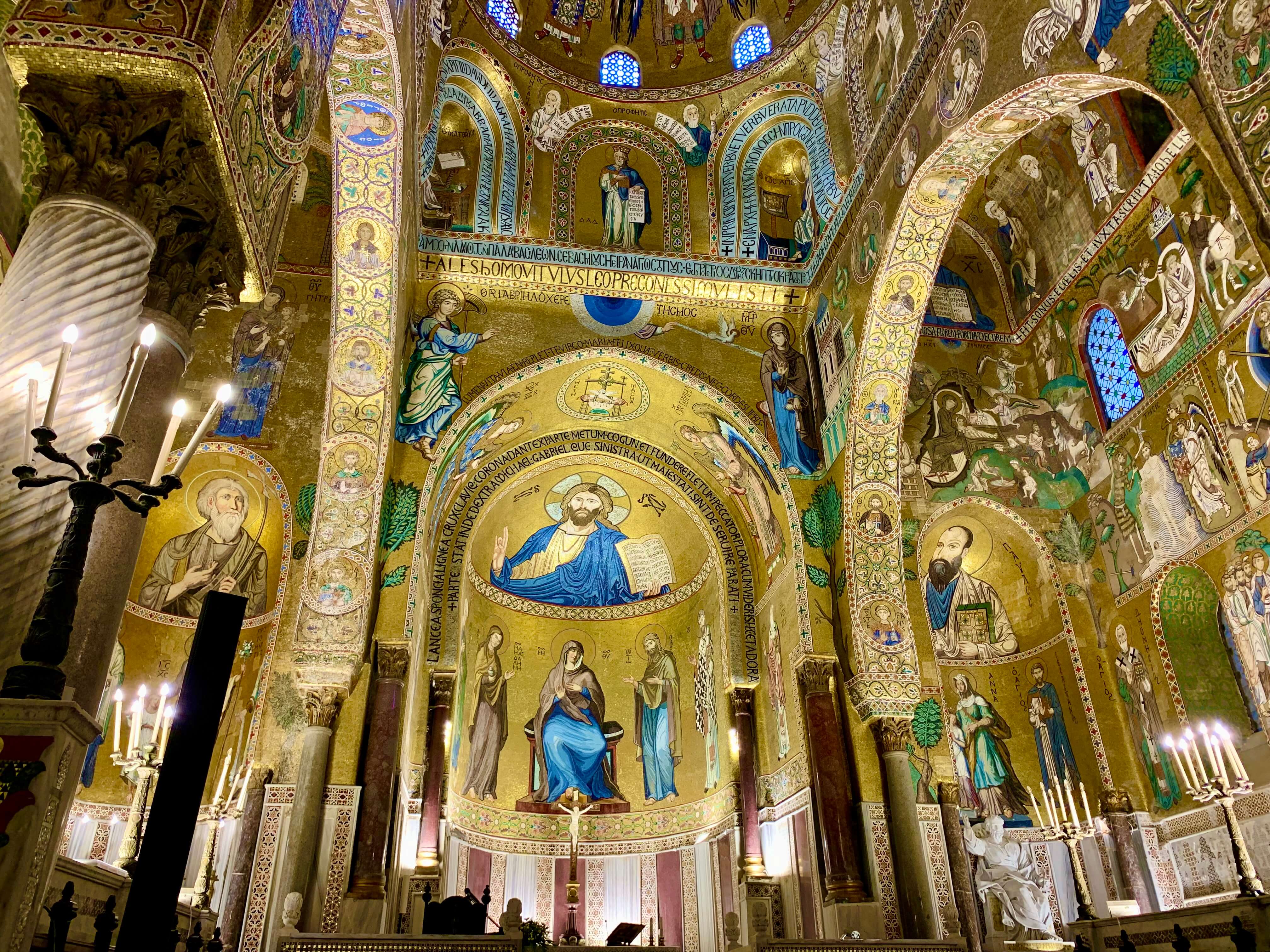 Palatine Chapel in Palermo.
Palatine Chapel in Palermo.As you step inside you are soon to be transported to a world of breathtaking beauty and intricate craftsmanship. Every inch of this architectural masterpiece is adorned with elaborate mosaics, vibrant frescoes, and exquisite marble work.
Initially built in the 12th century as part of the Palazzo dei Normanni (Norman Palace), the Palatine Chapel has served as a royal chapel, a place of worship, and a symbol of power. Its striking architectural features, including the elegant arches, geometric patterns, and finely carved stonework, continue to captivate visitors - like they have done for almost a thousand years.
The historical context in which this masterpiece was created is almost as incomprehensible as the chapel itself. While in elsewhere in Europe, different religions were slaughtering each other in religious wars, in Sicily, they were working together.
Thanks to the tolerance of the Norman kings, we can now marvel at these extraordinary monuments. In addition to their beauty, they serve as a reminder of what can be achieved when people focus on the strengths of other cultures rather than look for faults.
In this article, we unravel the secrets of the Palatine Chapel - an architectural masterpiece showcasing the extraordinary richness of Italian art and history.
Historical Significance of the Palatine Chapel
The Palatine Chapel, constructed in the 12th century during the reign of Roger II of Sicily, is a significant part of the historical narrative of Palermo and Italy.
This chapel is part of the larger Norman Palace, which served as the royal residence for the Norman kings of Sicily. Its location within the palace symbolized the close relationship between religion and politics during this period.
The Normans were former Vikings who had since converted to Christianity. A bunch of them first arrived in southern Italy during the Middle Ages on pilgrimage.
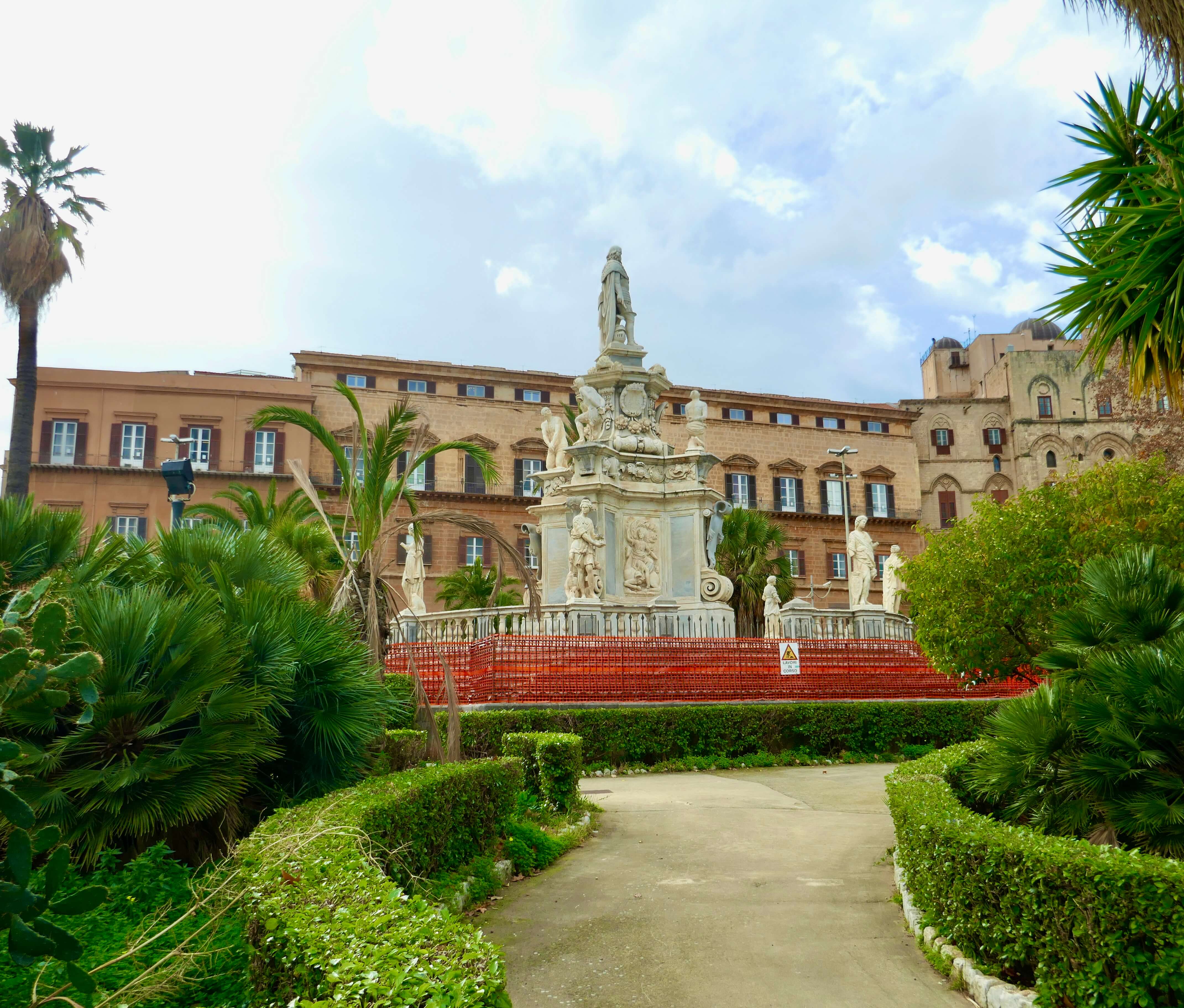 Norman Palace in Palermo.
Norman Palace in Palermo.From there, they were recruited as mercenaries to fight for the Lombard cause in the tribal wars in Southern Italy. As work was plenty, the Normans soon brought their families with them and settled there.
Around the year 1000, the Pope of Rome assigned the Normans the task of cleansing southern Italy, Sicily, and North Africa of Byzantine, Islamic, and Jewish influences.
Within a few decades, the Normans, under Robert Guiscard, succeeded in conquering Sicily from the Saracens. Guiscard died shortly afterward as did his partner in arms, Roger I. Sicily was left to latter's son, Roger II.
Roger II was crowned King of Sicily in 1130. He built his Palace in Palermo, which the Arabs had made the capital of the island. However, Roger did not follow the Pope's order to eradicate the infidels. He found it more advantageous to cooperate with them.
In those days, it was customary for kings to build a chapel in their palaces. This chapel was to surpass all other churches in the country in splendor. It was also customary to include political references favorable to the king. For Roger, this place became the Palatine Chapel in Palermo.
The Palatine Chapel became a royal chapel used for important ceremonies, including the coronation of kings. This role in royal ceremonies helped cement its status as a central religious and political institution, symbolizing the power and authority of the Norman kings.
The chapel also became a sanctuary where different religious practices coexisted, symbolizing the tolerance and cultural exchange that characterized medieval Sicily. This historical significance, not limited to its function as a chapel, represents the broader narrative of Sicilian identity and heritage, making it an essential landmark in understanding the region's past.
Today, the Palatine Chapel is recognized as a UNESCO World Heritage Site, further emphasizing its importance in the global historical context. The chapel's rich history draws tens of thousands of visitors each year, eager to explore its intricate details and learn about the powerful stories embedded within its walls.
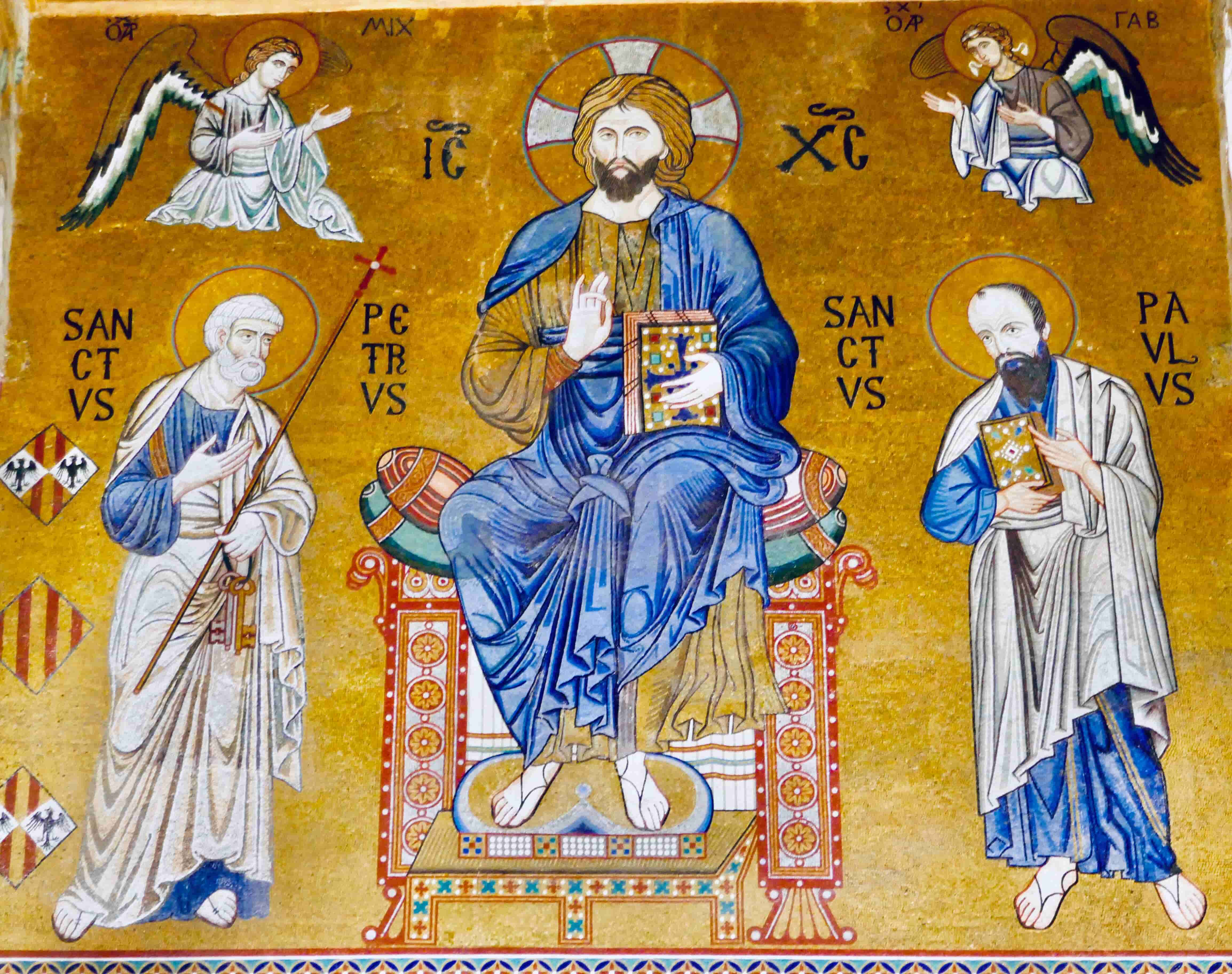 Palatine Chapel is dedicated to Saint Peter and Saint Paul, pictured here in one of its mosaics. They are also the patron saints of the Vatican, an obvious nod to that direction.
Palatine Chapel is dedicated to Saint Peter and Saint Paul, pictured here in one of its mosaics. They are also the patron saints of the Vatican, an obvious nod to that direction.The Mosaics of the Palatine Chapel
The mosaics of the Palatine Chapel in Palermo are perhaps its most awe-inspiring feature. They showcase an artistic mastery that has captivated viewers for centuries.
Spanning across the walls and the chapel's apse, these mosaics are composed of thousands of tiny colored glass and gold pieces, meticulously arranged to create intricate images narrating biblical tales and saints' lives.
The art of mosaic making was developed within the Orthodox Church in Constantinople in the early centuries of the Eastern Roman Empire. Gradually, the art spread to the Latin Church.
Because of their unprecedented showiness, Byzantine mosaics became popular in decorating churches. Similar mosaics in the Palermo region can also be admired in Chiesa della Martorana, Monreale Cathedral, and Cefalu.
The craftsmanship involved in their creation is a testament to the skill of the artisans who worked on them. They had been brought over from Byzantium or gone there to learn their crafts.
In the Middle Ages, the location of the images in the church was well-defined, as were the appearance and clothing of the figures depicted. Therefore, artists were not allowed to use their creativity, as was the case later in the Renaissance.
However, not all artists were the same, and there were differences in skill. The mosaics in the Palatine Chapel are, however, first-rate. The result is a stunning visual narrative that enchants and educates visitors about the Christian faith and its teachings.
The most famous mosaic within the chapel depicts Christ Pantocrator, located in the apse. In this image, he is shown in a majestic and authoritative pose, surrounded by angels and saints. This central image serves as a religious focal point and a representation of the power of the divine.
The vibrant colors and the use of gold leaf create a luminous effect that enhances the chapel's spiritual ambiance. Each mosaic is imbued with symbolic meaning, reflecting the theological beliefs of the time and the desire to convey God's glory through art.
The intricate patterns and motifs that adorn the chapel blend Christian iconography with elements of Islamic art. This fusion of styles reflects the diverse influences that shaped Sicilian art and architecture.
As visitors gaze upon these magnificent mosaics, they are invited to appreciate the artistic legacy that continues to inspire generations and serve as a bridge between the past and the present.
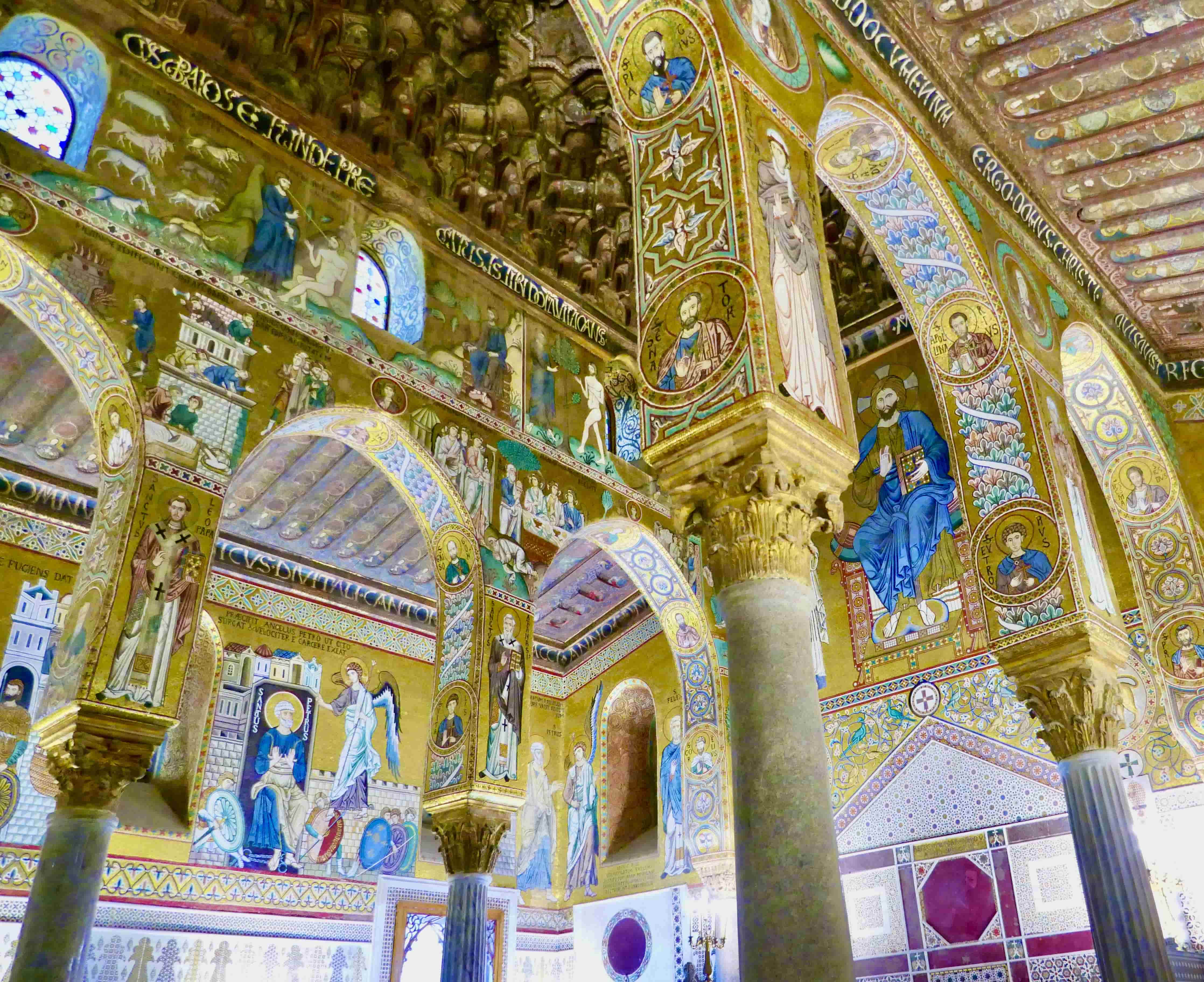 Mosaics depicting stories from the Bible fill the chapel walls.
Mosaics depicting stories from the Bible fill the chapel walls.Visiting the Palatine Chapel in Palermo - Practical Information
Anyone exploring the city should visit the Palatine Chapel in Palermo. It is located within the Palazzo dei Normanni and easily accessible in the city's heart. Practical information can significantly enhance their experience.
Opening hours typically vary throughout the year, so checking the official website or local tourist information for the most current visiting times is advisable. Renovation work can also affect them occasionally, usually in winter.
It is worth buying a joint ticket, including a Norman Palace interior tour. This building is also worth a visit. Today, it also houses the Sicilian Regional Assembly and is closed to the public during its meetings.
Photography is allowed in the chapel, but visitors should respect the space's sacred nature. A quiet demeanor is appreciated, allowing everyone to fully absorb the chapel's beauty and spirituality. Hats must be removed, and the dress must not be too revealing.
Lastly, consider visiting on weekdays or early mornings to enjoy a more peaceful atmosphere. The Palatine Chapel is not just a destination; it is an experience that immerses you in Sicily's historical and cultural richness, making it a highlight of any trip to Palermo.
Other Attractions Near the Palatine Chapel
The Palatine Chapel in Palermo is situated in its vibrant historical center, offering a wealth of attractions within walking distance.
Just a short stroll from the Palatine Chapel is the Cathedral of Palermo, another architectural marvel that deserves a visit. This majestic cathedral showcases a blend of Norman, Arab, Gothic, and Baroque styles, reflecting its long and varied history.
The interior is adorned with beautiful chapels and altars, while the exterior boasts impressive spires and a striking façade. Climbing to the rooftop offers breathtaking views of the city and the surrounding landscape, providing a perfect backdrop for photography enthusiasts.
Palermo's other main attractions, such as Chiesa della Martorana, are within walking distance.
For more information on Palermo's main attractions, click HERE.
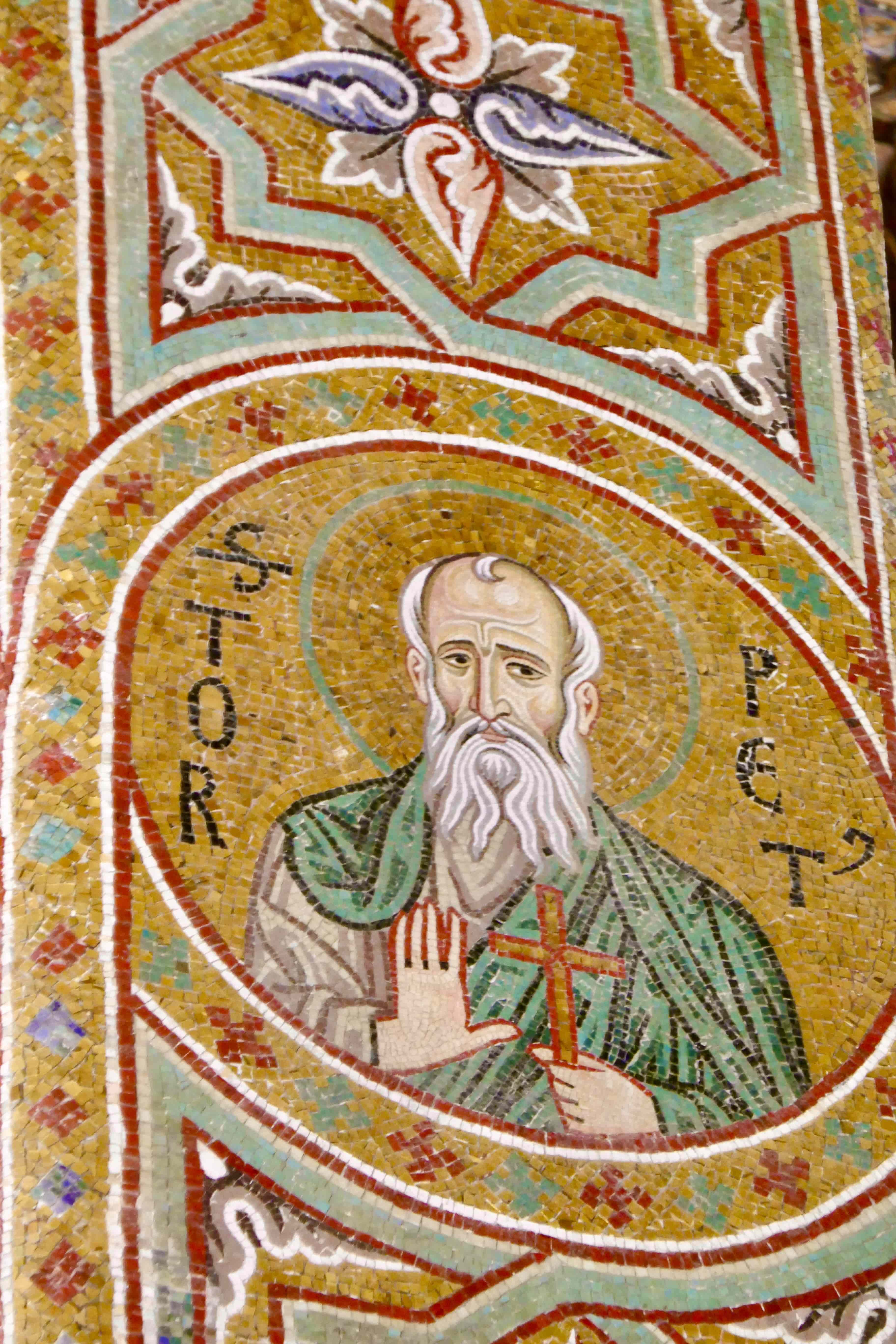
Conclusion: The Enduring Legacy of the Palatine Chapel
The Palatine Chapel in Palermo is more than just an architectural masterpiece; it is a living testament to Sicily's rich and diverse history. Its intricate design, mesmerizing mosaics, and harmonious blend of cultural influences create an experience that transcends time.
As visitors walk through its hallowed space, they witness the artistry of the past and engage with the stories and traditions that have shaped the region over centuries.
The Palatine Chapel is part of Arab-Norman Palermo that has been recognized as a UNESCO World Heritage Site. It draws visitors worldwide, eager to explore its beauty and learn about its storied past.
The Palatine Chapel stands as a beacon of hope and resilience, a symbol of the rich tapestry of human experience that continues to inspire and connect us all. Its legacy will undoubtedly endure for generations, inviting future visitors to explore its beauty and significance in the heart of Sicily.
(January 22, 2025)
Recent Articles
-
Villa Palagonia: The Enigmatic "Villa of Monsters"
May 07, 25 01:41 PM
Villa Palagonia: A Baroque masterpiece and a piece of Sicilian eccentricity -
Villa Romana del Casale - A Piece of Ancient Rome
Apr 29, 25 01:58 PM
Villa Romana del Casale: an astonishing collection of Roman mosaics in the heart of Sicily -
Letizia Battaglia: Capturing Life Through the Lens
Apr 29, 25 06:54 AM
Letizia Battaglia captured the raw essence of life in Sicily like no other
Follow MANY FACES OF SICILY on Facebook, Instagram, Bluesky & Pinterest
Contact: vesa@manyfacesofsicily.com

